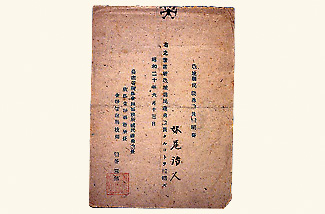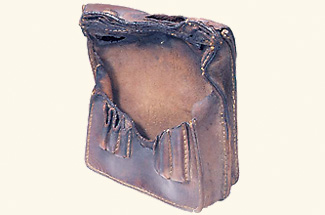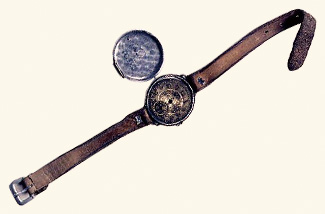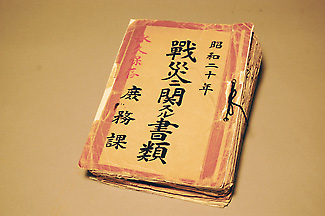Workplace Volunteer Citizen Corps
The Workplace Volunteer Citizen Corps were organized by government/public office, company, factory or business establishment, each of which had the head or the manager of the workplace as the commander, and were organized by Battalion, Company, and Platoon. Students who were mobilized to arsenals became members of the Workplace Volunteer Citizen Corps. To avoid duplicated registration to the Workplace Volunteer Citizen Corps and Community Volunteer Citizen Corps, the list of the Workplace Volunteer Citizen Corps members was sent to the relevant municipality, and the municipality was asked to exclude the members on the list from the Community Volunteer Citizen Corps.
Approximately 10,000 members from 38 Workplace Volunteer Citizen Corps were mobilized for building demolition works in Hiroshima City on August 6.
The urban area of Hiroshima was devastated by the A-bombing. Materials regarding the volunteer citizen corps were also lost in fires. Although damage done by the bombing has been recorded in documentations of company history and in-house newsletters published after World War II, detailed descriptions of the volunteer citizen corps rarely appear.

Hiroshima Food Office Volunteer Citizen Corps
Workplace Volunteer Citizen Corps certificate
Haruto Seo (then, 17) was dispatched as a workplace volunteer citizen corps member from Hiroshima Food Office, and exposed to the bomb at his building demolition worksite in Zakoba-cho (now, Kokutaiji-machi, Naka-ku), approximately 1 km from the hypocenter. After rescuing his acquaintance, who had been pinned under a collapsed building, he passed by a burning city filled with the injured, and finally returned to his office located in Minami-kaniya-cho. Although he walked around for three days in Hiroshima City searching for his missing fellow workers and their family members, he could not find any.
Donated by Haruto Seo

Hiroshima Gas Company Volunteer Citizen Corps
Bag
Fukuichi Matsui (then, 51) died in the A-bombing when he was dispatched to Kobiki-cho (now, Nakajima-cho, Naka-ku), approximately 500 meters from the hypocenter, for building demolition as a workplace volunteer citizen corps member from Hiroshima Gas Company. This bag had been kept by the company as one of the articles left behind, and was identified as his from his name written on the back side. His wife, Taka (then, 47) continued her desperate search for her husband, who had yet to return home, in the city of a burnt field, but could not even find his ashes. This bag, which has become a keepsake of him, was burned away in the part where his aluminum lunch box was carried.
Donated by Taka Matsui
Mitsubishi Heavy Industries Works No. 20 Volunteer Citizen Corps
Wristwatch
Kozue Okamoto (then, 20) was dispatched as a workplace volunteer citizen corps member from Mitsubishi Heavy Industries Works No. 20, and was exposed to the bomb at her building demolition worksite in Dohashi (or Koami-cho). In the afternoon of the 6th, she was found by her fellow workers, and was carried to the company dormitory in Gion-cho. Suffering from burn injuries all over her body, Kozue was unrecognizable even to her family with all her skin burned and festering in dark red except for the area under this watch band. Despite the attentive care of her mother, Mitsu (then, 62), who had rushed to help her, she died around 4:00 p.m. on the 7th, the day after the bombing.
Donated by Fusako Okamoto

Ministry of Interior Chugoku-Shikoku Public Works Office Volunteer Citizen Corps
Documents regarding War Disasters
This is a file of documents reporting on the damage done by the bombing, sent to the Ministry of Interior from the head of the Chugoku-Shikoku Public Works Office on August 28, 1945. The information on 34 people mobilized as volunteer citizen corps members is registered, including the situation of 22 deceased members and 10 missing members.
Collection of Ministry of Land, Infrastructure, Transport and Tourism Chugoku Regional Development Bureau

